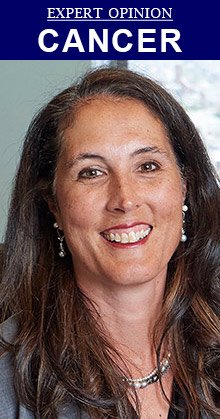
December 12, 2018
 Pixabay /from Pexels
Pixabay /from Pexels
According to the Centers for Disease Control and Prevention, less than 50 percent of girls and 38 percent of boys have completed the recommended HPV vaccine series.
Editor's note: This column is written by Karen E. Knudsen, Ph.D., the enterprise director of the Sidney Kimmel Cancer Center – Jefferson Health, who oversees cancer care and cancer research at all SKCC-Jefferson Health sites within the Greater Philadelphia region. She will write occasionally on topics related to cancer.
• • •
Human papillomavirus is incredibly common, infecting most people at some point in their lives.
According to the Centers for Disease Control and Prevention, nearly 80 million people in the United States are infected with HPV, or human papillomavirus, with 14 million new infections occurring each year. Most infections are benign and clear up on their own, but some high-risk strains can persist and lead to cancer. This year more than 31,000 people in the United States will be diagnosed with an HPV-associated cancer.
Karen E. Knudsen, Ph.D., is the enterprise director of the Sidney Kimmel Cancer Center – Jefferson Health.
But there is good news: we can prevent cancers caused by HPV through vaccination. A safe and effective vaccine to prevent HPV infections that can cause cancer has been available since 2006; however, uptake has been well below the national goal of 80 percent coverage by 2020. The CDC found that less than 50 percent of girls and 38 percent of boys completed the recommended vaccine series.
Because nearly all HPV cases are transmitted sexually, parents may assume their children do not need to be vaccinated before they are sexually active, but it is important that young people get the vaccine because it is most effective to develop immunity well before exposure. It is also very important that both boys and girls receive the vaccine. The ideal time to vaccinate children is at age 11 or 12, although the U.S. Food and Drug Administration recently approved the vaccine for men and women up to age 45.
We can already see the benefits of robust HPV vaccination. Australia is on pace to eliminate cervical cancer in 20 years, becoming the first country to do so, thanks to its national vaccine program and cervical cancer screenings. In 2007, Australia introduced the world’s first national HPV vaccination program and by 2016, the vaccination rate among 15-year-old girls was 79 percent and 73 percent among 15-year-old boys. The country’s current cervical cancer rate is already about half the global average and the rate of HPV infections among young women aged 18 to 24 dropped from 22 percent to 1 percent between 2005 and 2015 as a result.
The Sidney Kimmel Cancer Center – Jefferson Health (SKCC) recently joined the nation’s 69 other National Cancer Institute (NCI)-designated cancer centers to issue a national call to action urging increased HPV vaccination and screening to eliminate HPV-associated cancers, starting with cervical cancer. Insufficient vaccination is a public health threat and as leaders in cancer care and research, our institutions called upon our nation’s physicians, parents, and young adults to take advantage of this opportunity to prevent cancer through vaccination.
Additionally, the Kimmel Cancer Center is committed to improving HPV vaccination rates locally and beyond. Vaccination rates in Philadelphia among adolescent boys and girls are higher than the national averages but still below the national goal. With the help of a grant from the National Institutes of Health, population scientists at Kimmel are conducting research to understand barriers to HPV vaccination in the Philadelphia region, which will help experts develop strategies to increase vaccination rates.
Our work has already evolved into the Greater Philadelphia HPV Immunization Collaborative, which has united health professionals and advocates in the region who share a common goal of HPV prevention. The collaborative provides a platform to share knowledge and strategies that support HPV immunization.
As a cancer researcher and mother of teenage boys, I was thrilled to see the development of a safe and effective vaccine that can prevent and eventually eradicate HPV-associated cancers, and urge everyone to get their children, their patients and themselves vaccinated.
